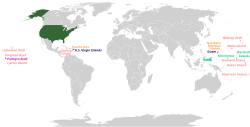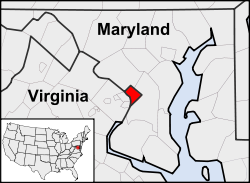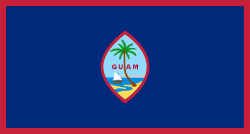51st state
51st state refers to a place or territory that is not one of the 50 states of the United States, but people think about making it the 51st state. It is sometimes a joke term in American politics, and sometimes a realistic one. It is usually said about the possibility of Puerto Rico or other U.S. territories becoming part of the United States. There have been attempts by people in the United States to get Canada to join them (like in the Articles of Confederation), but Canada has never accepted these offers.[1] It is also sometimes used to refer to countries that seem to be controlled by the United States. Before the year 1959, when Alaska and Hawaii became states, the sentence "the 49th state" was used.[2][3]
Places in the United States that are not states right now, but might become the 51st state, include the District of Columbia, Puerto Rico, Guam, the US Virgin Islands, American Samoa, and the Northern Mariana Islands. Besides admitting a new state, another type of proposal has been to form a 51st (or even 52nd) state by dividing a current state, such as the most-populous state (and third-largest state, geographically) of California into two or even three states, or Texas (the second-most populous) into four or five states.
Some regions of the U.S. that include land that is now in two different states and might become a new state include the "State of Jefferson" (Northmost California plus the southern counties of Oregon) and the "State of Lincoln" (Eastmost Washington State plus the northern panhandle of Idaho. A move has also been proposed to separate the westmost one-fourth of Nebraska from that state, but to add that to Wyoming (the least-populous state), rather than to create an entirely new state. This region is actually much closer to Cheyenne, Wyoming, the capital city, than it is to its current capital of Lincoln, Nebraska.
In 2012 and more recently in 2017, the people of Puerto Rico voted strongly in favor of becoming the 51st state, but the approval of the United States Congress is also needed.[4][5]
Guyana has also seen political movements favoring and advocating for it to become an American associated territory with eventual statehood as its goal.
[6][7]References
- ↑ "Will Canada become the 51st state?". Vancouver Sun. Canada.com. August 18, 2007. Archived from the original on 15 October 2015. Retrieved 8 December 2013.
- ↑ "Canada: EXTERNAL AFFAIRS: Sailing, Sailing..." Time Magazine. February 9, 1948. Retrieved 8 December 2013.
- ↑ "Canada: EXTERNAL AFFAIRS: 49th State?". Time Magazine. February 23, 1948. Retrieved 8 December 2013.
- ↑ Could Puerto Rico become America's 51st state?. London. October 21, 2013. http://www.economist.com/blogs/economist-explains/2013/10/economist-explains-15. Retrieved February 15, 2014.
- ↑ Robles, Frances (2017-06-11) (in en-US). 23% of Puerto Ricans Vote in Referendum, 97% of Them for Statehood. . https://www.nytimes.com/2017/06/11/us/puerto-ricans-vote-on-the-question-of-statehood.html. Retrieved 2017-06-12.
- ↑ Glusman, Graham (2018-04-17). "Should the U.S. and Canada Merge?". Medium. Retrieved 2021-04-16.
- ↑ "Party 51 | Liberty, Security, Prosperity". Parti 51. Retrieved 2021-04-16.
51st State Media
Map of the US and its territories The 50 states and the District of Columbia* Territory: incorporated, unorganized* Territory: unincorporated with Commonwealth status* Territory: unincorporated, organized* Territory: unincorporated, unorganized
This 2022 Congressional Research Service report examines the legal processes for admission to the Union.
A 2017 license plate for Washington, D.C.
Flag of the Northern Mariana Islands. Guam and the Northern Marianas chose to remain separate in 20th century referendums, and both chose to be U.S. territories.










